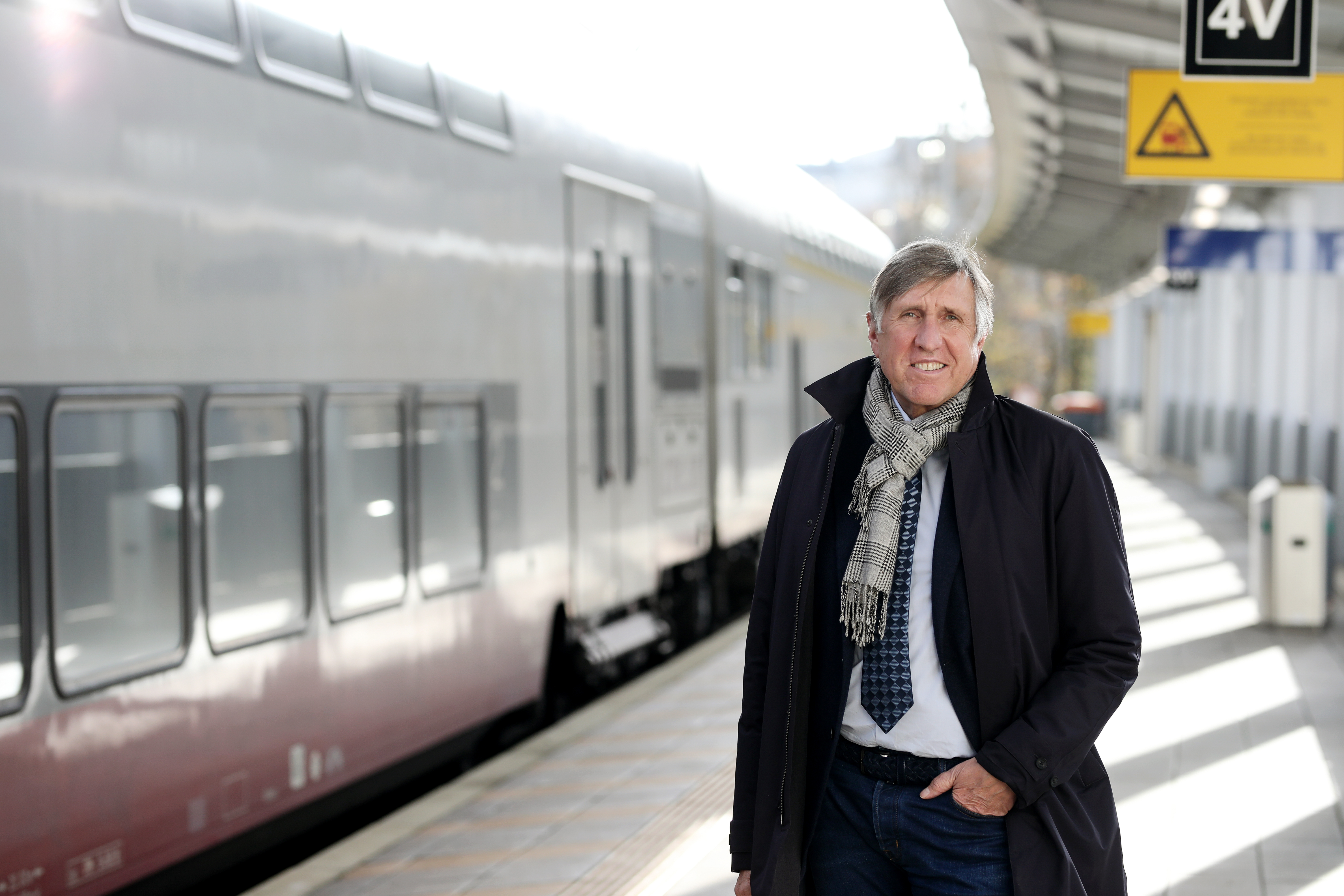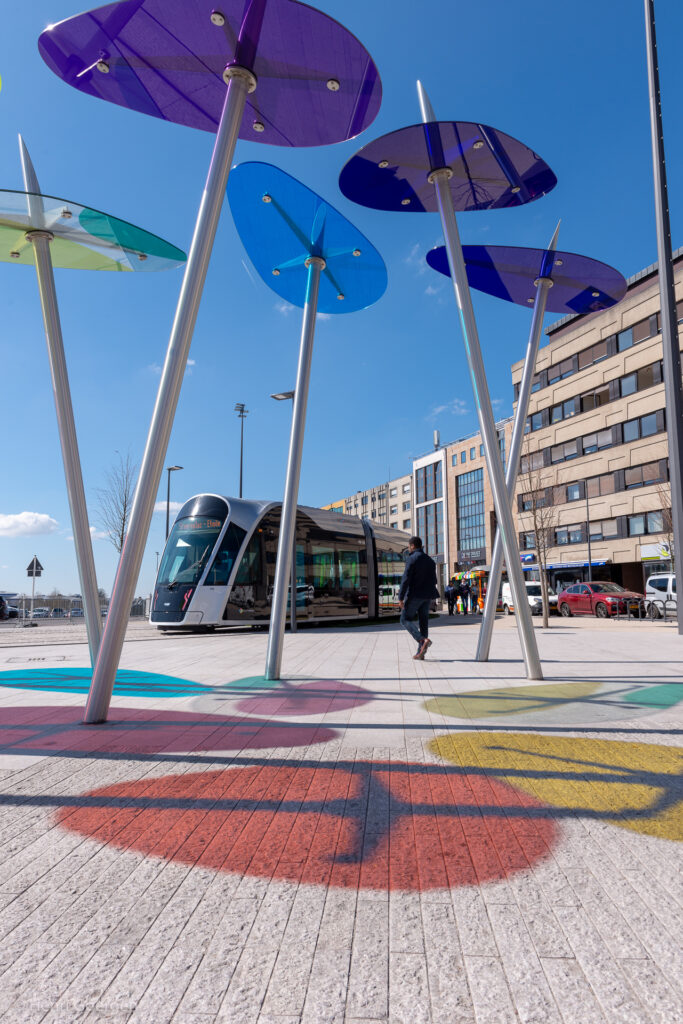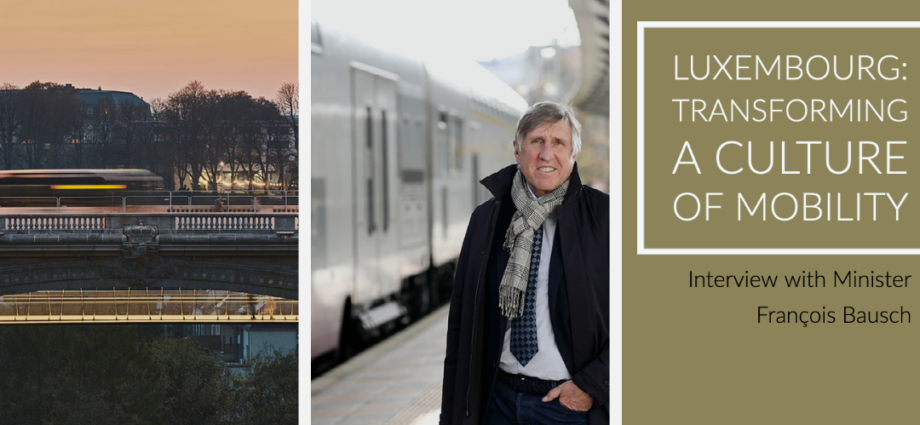With a commitment to learn about and cover sustainable urban mobility developments and challenges in cities across the world, we connected with the office of Deputy Prime Minister François Bausch of Luxembourg to better understand contemporary challenges as well as opportunities in mobility there.
It was via our introductory talk with Minister Bausch that we learned about the very intensive mobility issues of Luxembourg, cultivated from years of auto-centric planning as well as car-centric culture. We also learned about the innovation and striking changes afoot, largely due to Bausch’s own initiatives.
Minister Bausch is also Luxembourg’s Minister of Defence & Minister for Mobility and Public Works.
“We must concentrate on moving people instead of moving vehicles.”
Minister Bausch
“…the challenge for modal shift is very simple: Make the other modes more attractive than the car.”
Minister Bausch
Pedestrian Space: Let’s start with the free public initiative, launched in March 2020. It is now a little over a year later. Any reflections on this decision as well as reception of the public over time?
Minister Bausch: As free public transport literally coincided with the first full Covid-19 related lockdown, it will be impossible to measure its impact on ridership. An increase of the latter was however never the main objective. The main objective of free public transport was to make it even more convenient. It has to be said that at below 10%, cost recovery from ticketing was very low to start with, by international standards, hence increasing the subsidy by that proportion was less of a budgetary effort than it would be in a country with currently a higher cost recovery of public transport.

“…free public transport is just one more argument for making public transport easy to use.”
Minister Bausch
Pedestrian Space: The free public transport was a feature in the electoral program of all 3 coalition parties forming a new government in October 2018, so it had the political unison and backing to become a reality. How is the political outlook today on the initiative?
Minister Bausch: Two of the coalition parties proposed free public transport outright, the third proposed it at a later date, once the quality of public transport would have been increased. The first two prevailed in the government’s work program. At this stage, abolishing free public transport obviously does not appear like a winning political proposition.
Pedestrian Space: The motive for the free public transport initiatives was also largely social and focused on low-income earners, who make up a core demographic of public transport users in Luxembourg, correct?
Minister Bausch: The project is primarily a dual social measure, which on the one hand means more money in the wallets of low-income earners and on the other hand, the burden is shouldered by those who are wealthier because it is funded by taxpayers’ money. Another reason was that free public transport is just one more argument for making public transport easy to use.

Pedestrian Space: What have the challenges been in launching the free public transport initiative?
Minister Bausch: International ticket prices had to renegotiated to account for the Luxembourgish part henceforth being free of charge, and the trade unions representing people involved in selling and controlling tickets had to be reassured that this personnel would be reaffected to other tasks, which has been the case.
Pedestrian Space: For ridership of public transport to drastically increase, this also means that who uses the system increasingly diversifies. Are there campaigns or other public outreach to encourage people from various areas, economic status etc to consider shifting to more public transport use?
Minister Bausch: That is a core element of almost all communication from this ministry, notably during the frequent press conferences on new mobility infrastructure or offers.
Pedestrian Space: Also, as has been widely noted, perhaps introducing this initiative was more manageable due to Luxembourg’s small size. However, for other countries, the model could be looked at as inspiration at the city and municipality level, right? Has Luxembourg received and hosted individuals from other countries interested in learning more about the free public transport initiative?
Minister Bausch: This was probably more manageable in Luxembourg because (a) cost recovery of public transport was extremely low to start with, making the measure relatively cheap, (b) there are only few actors in public transport in Luxembourg and (c) there was political consensus that it should be done. Due to Covid, we have not really hosted many such individuals. The greatest interest perhaps came from experts and academics who wanted to understand whether this led to a significant modal shift (which as not expected regardless of Covid and which did not happen), as they were somewhat worried that politicians would emulate this measure in less well funded systems, leading to chronic underfinancing of public transport in such places. However, as any other budgetary issue, replicating this elsewhere is a matter of political priorities.
“Polls show that the people having shifted to more walking and cycling want to keep it that way, and that people having switched from public transport to cars during the pandemic want to shift back.”
Minister Bausch

Pedestrian Space: What has your administration observed as the impact of the pandemic on local mobility?
Minister Bausch: More walking and cycling, much more home-office, less public transport, more private cars. Polls show that the people having shifted to more walking and cycling want to keep it that way, and that people having switched from public transport to cars during the pandemic want to shift back. One has to say however that given the high pace of improvements to public transport and cycling infrastructure in Luxembourg, “before-after” comparisons are difficult, as the increasing attractiveness of the offer itself clearly shifts behavior.
Pedestrian Space: The modal split in Luxembourg shows the very high dependence on cars there. What are some of the key challenges you are working with concerning encouraging other forms of transport in a region that is so heavily car-centric?
Minister Bausch: Over the past 60 years, we have built excellent infrastructure for cars: you can reach every address from every other address by car on perfectly paved roads, and there is an abundance of mostly free parking, especially at work. To many people, mobility by private car still offers the best quality, in spite of traffic jams. This preference for high-quality offers is however independent of transport mode. The punctual, efficient and actually beautiful tramway line has approval ratings of 90% and huge ridership. Luxembourgers buy the highest quality of bicycles. Good cycling infrastructure gets used immediately, cyclists appearing as bees appear in bloom. And where the trains run reliably and the Park-and-Rides are strategically located, they are full. Hence the challenge for modal shift is very simple: Make the other modes more attractive than the car.

Pedestrian Space: The current modes of public transport are train, tram and bus. The tram, as you noted during our talk, was closed down in the 60’s. What led to its reintegration into the city?
Minister Bausch: With Luxembourg’s economy outpacing, by far, the availability of affordable housing, the City of Luxembourg grew to have the greatest imbalance of jobs per resident at working age (3,7 : 1). Hence the commuter rush is without parallel in Europe. Busses could no longer handle this at peak hour. There was literally a 1km bus traffic jam on the main artery in the historic city center. In the end, walking beside this wall of busses had become faster than riding in them. It was a simple case of a transport mode (the bus) no longer being able to handle a certain capacity. The tram transports much more people much more comfortably in a way that is much more easy on the city itself. Hence the only thing that was wrong about this reintroduction of the tram was that politicians debated it for 20 years, instead of just building it much sooner.
Pedestrian Space: What are the challenges for walkability locally?
Minister Bausch: Walking infrastructure within cities is a municipal competency. Topics are separating pedestrians from cyclists and from electric micro-mobility, waiting times at traffic intersections, effective free width of sidewalks. What we can do as a ministry is adapt the traffic code, for example banning electric micro-mobility from sidewalks. On national infrastructure projects, we are getting better at integrating intuitive pedestrian infrastructure.
Pedestrian Space: Are there specific campaigns for encouraging active (or soft) mobility?
Minister Bausch: We do not particularity like the terms of active (even less, “soft” mobility), because it mixes two types of mobility that are fundamentally distinct, even if they are both healthy. And it leads planners to believe that a common infrastructure for pedestrians and cyclists would be good enough, which it clearly isn’t, especially within built-up areas. The best campaigns for walking and cycling therefore are attractive and intuitive infrastructures.
One specific campaign to favor cycling was born in the special context of 2020. During the “bicycle summer”, the Ministry, which is in charge of regulating traffic outside of built-up areas, closed a number of roads to car traffic, thereby filling gaps in the national cycle network. Over 40,000 cyclists participated in these events, which is very significant in a population of 600’000. Hence the project will be repeated from July 31, to August 29, 2021. People interested in visiting Luxembourg will find details at www.velosummer.lu.

